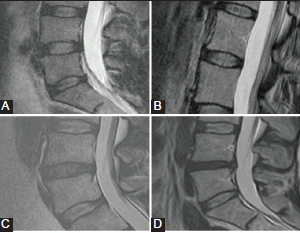Assessment of Lumbar Spine Disc Degeneration in Coherence to Pfirrman Grades and Oswestry Disability Index
DOI:
https://doi.org/10.17532/jhsci.2020.1064Keywords:
Magnetic resonance, lumbar spine, low back pain, disc degeneration, Oswestry Disability Index, Pfirrmann disc grade, visual analogue scaleAbstract
Introduction: Intervertebral disc (IVD) degeneration (IDD) is one of the main causes of low back pain (LBP). Standardized diagnostic algorithms for adequate estimation and classification of changes of lumbar discs are mandatory before starting with therapy.
Methods: One hundred patients who were indicated for lumbar magnetic resonance imaging (MRI) were included in the study. Pfirrmann grading system was used for the determination of IDD, while the visual analog scale (VAS) is used for evaluation of the intensity of LBP. To quantification of disability for LBP, we used the Oswestry Disability Index (ODI).
Result: Results showed higher Pfirrmann grades II and III for L2/L3 and L3/L4 lumbar levels and lower scores at L4/L5 and L5/S1. The analysis also showed low scores at the L2/3 and L3/4 lumbar level for Pfirrmann grades IV and V, and there was an increased at more inferior lumbosacral levels L4/5 and L5/S1. There was a significant correlation between Pfirrmann grades and ODI (p = 0.24) as well as VAS (p = 0.16).
Conclusion: Higher Pfirrmann grades correlated with increased ODI and VAS. Therefore, MRI can be used as a strong indicator of clinical appearance, but it is important to take into consideration that LBP should be correlated with clinical features. By summing Pfirrmann grades of all lumbar intervertebral levels in each patient, we can get more accurate insight for the status of the lumbar spine.
Downloads

Downloads
Published
License
Copyright (c) 2020 Journal of Health Sciences

This work is licensed under a Creative Commons Attribution 4.0 International License.










